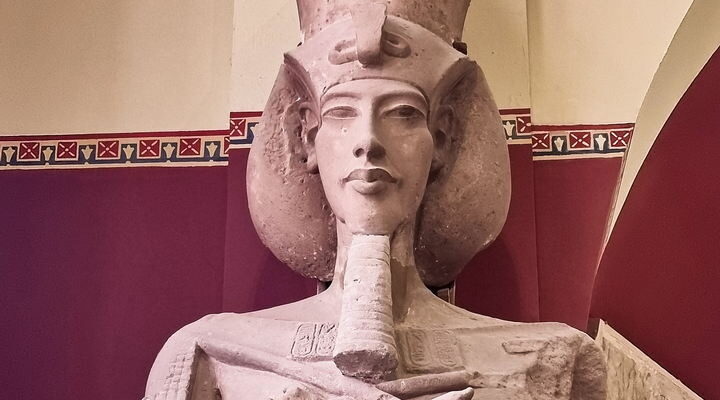Imagine stepping back into an era where the boundaries of religion and art were redrawn by a single ruler. Akhenaten, a name that both mystifies and intrigues, stands out as one of ancient Egypt’s most revolutionary pharaohs. His story is not just about a king; it’s a narrative that challenges our understanding of cultural and religious transformation.
Akhenaten’s reign was a time of unprecedented change in Egypt. He shifted the entire religious landscape by promoting Atenism, marking a daring move towards monotheism in a deeply polytheistic society. Boldly, he abandoned the worship of traditional deities, centering religious life around the worship of Aten, the sun disk. This was more than a religious reform; it was a cultural upheaval that influenced art, architecture, and society’s very fabric.
But Akhenaten’s story goes beyond his religious reforms. He was a family man, married to the powerful and equally fascinating Nefertiti. Together, they are often depicted in a light unseen in the annals of Egyptian royalty, showing a side that’s relatable and deeply human. Their capital, Amarna, remains a testament to their vision, offering a glimpse into a period of art and architecture that broke from centuries of tradition.
In essence, Akhenaten embodies the complexity of human ambition and its impact on society. His attempts to reshape Egyptian religion and culture resonate through time, offering a unique lens through which we can explore ancient beliefs, power dynamics, and the perennial struggle between innovation and tradition. This list serves as your gateway to uncovering the most fascinating facts about Akhenaten, a pharaoh who dared to reimagine the world according to his vision.
10 – Early Life and Unexpected Kingship
Akhenaten, born Amenhotep IV, ascended to the throne under unforeseen circumstances. Originally not destined for kingship, his path to the throne was altered by the untimely death of his elder brother, Thutmose, who was the heir apparent. This unexpected turn of events thrust Amenhotep IV into a position of power, setting the stage for one of ancient Egypt’s most transformative reigns. His ascension marked the beginning of significant religious, cultural, and political shifts within the empire, underscoring the impact of fate on the course of history.
The transition from Amenhotep IV to Akhenaten symbolizes a profound transformation not only in his personal identity but also in the ideological direction of his reign. Upon assuming power, he embarked on a series of revolutionary reforms that would redefine Egyptian society. His unexpected kingship became the catalyst for changes that challenged centuries-old traditions, highlighting how individual destinies can influence the broader historical narrative.
09 – Revolutionary Religious Reforms
Akhenaten’s most notable contribution to Egyptian history was his introduction of Atenism, a monotheistic or, by some accounts, monolatristic worship centered around Aten, the sun disk. This revolutionary religious reform positioned Aten as the supreme deity, a significant departure from the polytheistic traditions that had dominated Egyptian culture for millennia. Akhenaten declared himself the earthly representative of Aten, suggesting a direct divine connection that legitimized his radical changes to the religious landscape.
These reforms were not merely theological but also represented a profound restructuring of religious power dynamics within Egypt. By elevating Aten above all other gods, Akhenaten directly challenged the established priesthood, particularly those devoted to Amun, the traditional king of the gods. This move was as much about consolidating power as it was about spiritual belief, demonstrating how religion and politics were deeply intertwined in ancient Egyptian society.
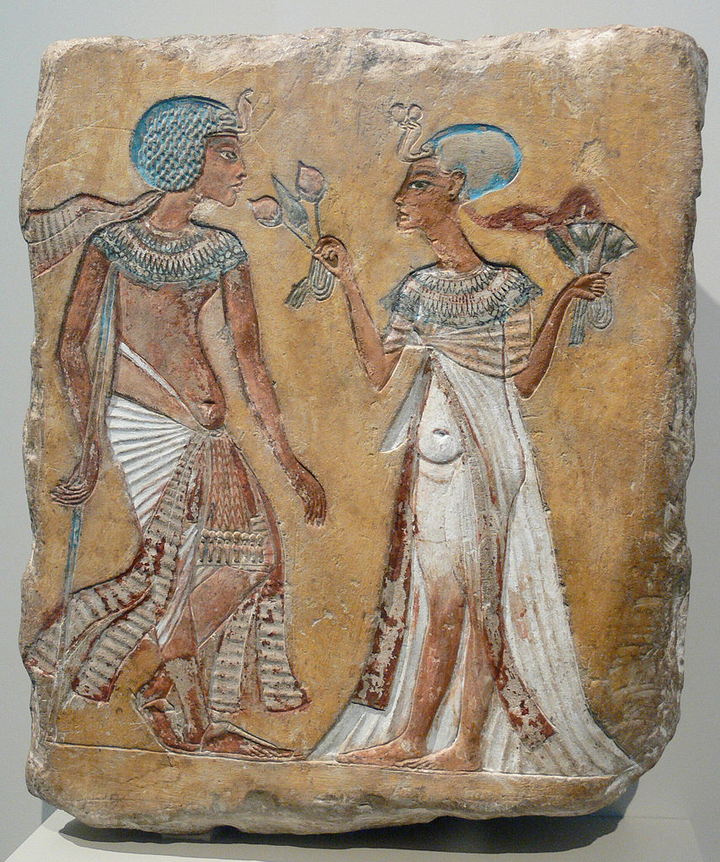
08 – Amarna, the New Capital
In a bold urban and architectural venture, Akhenaten established Akhetaten, now known as Amarna, as a new capital dedicated exclusively to the worship of Aten. This decision to move the capital was unprecedented and symbolized a clear break from the past, physically manifesting his religious reforms in the landscape of Egypt. Amarna was designed to be a city of light, where the sun disk’s rays were integral to its spiritual and physical structure, reflecting the pharaoh’s devotion to Aten.
The creation of Amarna also served as a strategic move to establish a religious and administrative center free from the influence of the traditional priesthood. By situating the capital in a previously uninhabited location, Akhenaten could more effectively implement his vision for a society centered around Atenism. This urban project not only demonstrated Akhenaten’s commitment to his religious reforms but also his ambition to reshape Egyptian civilization according to his ideological beliefs.
07 – A Radical Shift in Art and Culture
Akhenaten’s reign is distinguished by a marked departure from traditional Egyptian art, characterized by a more naturalistic and realistic portrayal of the royal family. This period, often referred to as the Amarna Art style, broke away from the idealized forms that had been prevalent, instead embracing depictions that highlighted the unique physical characteristics of the pharaoh and his family. Such artistic innovations reflected the broader cultural shifts occurring under Akhenaten’s rule, where personal expression and realism began to take precedence over conventional stylization.
The Amarna Art style not only altered the aesthetic norms of Egyptian art but also served as a vehicle for promoting Akhenaten’s religious and philosophical ideologies. By depicting the royal family in intimate, everyday scenes with Aten, Akhenaten reinforced the central role of his monotheistic worship in Egyptian life. These artistic changes were part of a broader attempt to redefine Egyptian identity in alignment with Atenism, demonstrating the interplay between art, religion, and royal propaganda.
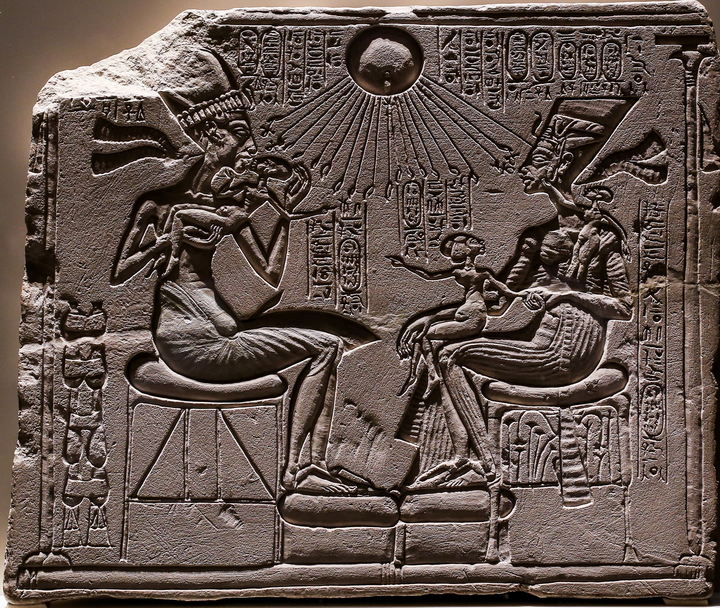
06 – Family Dynamics
Akhenaten’s personal life, particularly his marriage to Nefertiti and their family, played a significant role in his reign. Nefertiti was not just a queen but also a central figure in the promotion of Atenism, often depicted alongside Akhenaten in religious and ceremonial contexts. Their union produced at least six daughters, emphasizing the importance of family in the narrative of Akhenaten’s rule. The speculated relationship with Tutankhamun, possibly his son or a close relative, adds another layer to the pharaoh’s complex personal and dynastic relationships.
The prominence of Akhenaten’s family in art and state affairs underscores the intertwining of personal, political, and religious life in ancient Egypt. Nefertiti’s elevated status and the visibility of their daughtersin their father’s religious reforms, particularly in art and ceremony, further solidify the notion that Akhenaten’s reign was as much a family affair as it was a period of profound religious transformation. This focus on family dynamics offers a glimpse into the personal motivations behind Akhenaten’s public actions and highlights the role of royal families in shaping the course of Egyptian history.
05 – Controversial Attacks on Old Gods
Akhenaten’s radical religious reforms are arguably the most defining aspect of his reign. Early in his rule, he initiated a sweeping transformation of Egyptian religion, centering it around the worship of a single deity, Aten, represented as the sun disk. This marked a significant departure from the traditional Egyptian polytheistic beliefs, which featured a vast and complex pantheon of gods. Akhenaten’s efforts to diminish the influence of these traditional gods, particularly Amun, the king of gods, were not merely religious decisions but also political moves aimed at weakening the powerful priesthood of Amun. He went as far as erasing names and images of old gods from temples and monuments, a bold statement of his new religious policy that stirred considerable controversy among his subjects.
This drastic shift did not merely alter the religious landscape; it represented a profound cultural upheaval. Akhenaten’s actions were seen as an attack on the very fabric of Egyptian society, where religion played a central role in the identity and governance of the state. The pharaoh’s exclusive devotion to Aten was reflected in his art and monuments, further embedding his religious reforms into the cultural memory of Egypt. Yet, these changes were met with resistance and skepticism, laying the groundwork for the eventual restoration of the traditional pantheon following Akhenaten’s death. His successors, particularly Tutankhamun, moved swiftly to reinstate the worship of Amun and the other gods, signaling a return to the religious norms that had prevailed for centuries.
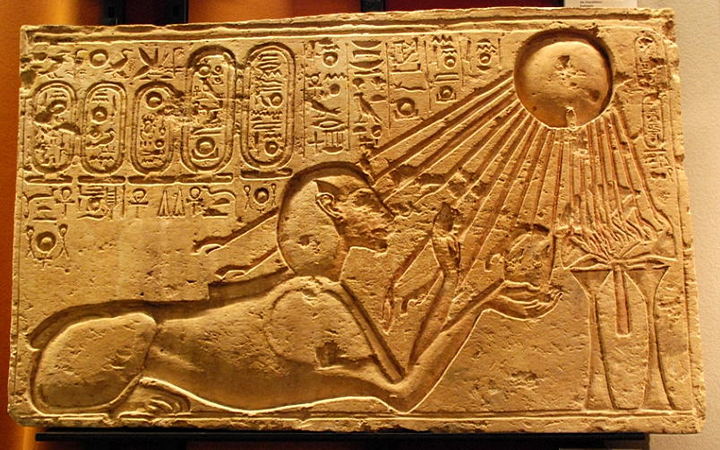
04 – Death and Legacy
Following Akhenaten’s death, the Egyptian empire witnessed a rapid dismantling of his religious reforms. His successor and likely son, Tutankhamun, played a pivotal role in this process, not only restoring the worship of the old gods but also moving the capital back to Thebes from Akhetaten. This reversal was symbolic of the broader rejection of Akhenaten’s monotheistic experiment. Tutankhamun’s change of name, from Tutankhaten to Tutankhamun, epitomized this return to traditional religious practices, reasserting the supremacy of Amun within the Egyptian pantheon.
The legacy of Akhenaten, however, remained complex and nuanced. In the years following his reign, efforts were made to erase his memory from history; his monuments were dismantled, his statues destroyed, and his name was omitted from the list of rulers. Despite these attempts, the discovery of Amarna in the late 19th century and subsequent archaeological and historical research have resurrected Akhenaten’s story, sparking a modern fascination with his life, reign, and the unique religious philosophy he introduced. Today, he stands as one of ancient Egypt’s most enigmatic and discussed pharaohs, with scholars continuing to debate the motivations behind his religious reforms and their impact on Egyptian society.
03 – Rediscovery and Modern Fascination
The rediscovery of Akhetaten, the city built by Akhenaten for the worship of Aten, marked a turning point in the understanding of his reign and its significance. Found in the late 19th century, Amarna, as it is now known, provided invaluable insights into the radical changes Akhenaten imposed on Egyptian society, culture, and religion. This archaeological find, coupled with the discovery of the Amarna Letters, offered a glimpse into the diplomatic and administrative aspects of his reign, revealing a ruler who was as much a revolutionary in politics as he was in religion.
Akhenaten’s mummy, identified through genetic testing as the father of Tutankhamun, added another layer to the fascination surrounding his figure. The debate over the identification of his mummy and the genetic links to Tutankhamun have intrigued scientists and historians alike, offering a personal glimpse into the life of a pharaoh who challenged the traditional boundaries of royal and divine authority. Akhenaten’s efforts to establish a monotheistic religion, unique in the context of ancient Egyptian history, have made him a subject of endless fascination, debate, and study, illustrating the enduring impact of his reign on the fields of archaeology, history, and Egyptology.
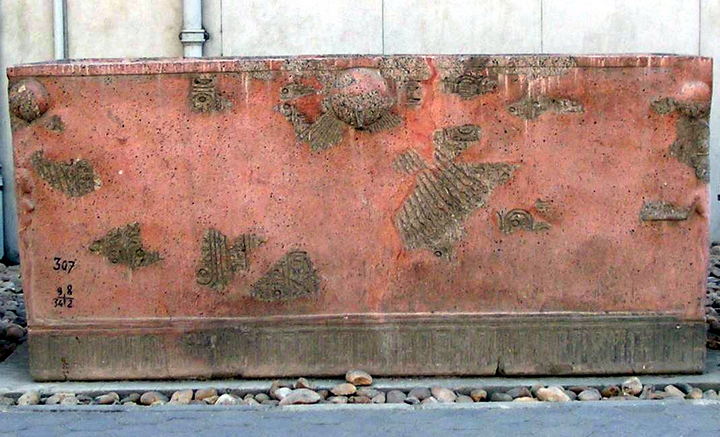
02 – Innovations in Architecture and City Planning
The establishment of Akhetaten, now known as Amarna, stands as one of the most striking examples of urban and architectural innovation in ancient Egypt. Conceived by Akhenaten as a physical manifestation of his religious revolution, the city was designed from the ground up to serve as the center of Aten worship. Unlike traditional Egyptian cities that evolved organically over centuries, Akhetaten was planned with a specific ideological and theological purpose in mind. Its layout, with broad, open streets and buildings designed to let in sunlight, was meant to honor Aten, the sun disk, emphasizing the role of light and nature in Atenism.
This focus on light and open space represented a significant departure from the architectural norms of the time. Temples and palaces in Akhetaten were built with an unprecedented orientation towards the sun, ensuring that Aten’s rays would illuminate their interiors. Furthermore, the art and reliefs within these structures depicted Akhenaten, his family, and the people of Egypt in a direct relationship with Aten, breaking away from traditional depictions of gods and pharaohs. This approach not only reflected Akhenaten’s theological innovations but also his desire to reshape the cultural and social landscapes of his kingdom.
01 – The Mystery of His Mummy
The final resting place and true identity of Akhenaten’s mummy have long been subjects of intense speculation and debate among Egyptologists. The discovery of a mummy in tomb KV55 in the Valley of the Kings sparked a significant controversy, with some suggesting it could be Akhenaten himself. Genetic testing has played a crucial role in this debate, offering evidence that the individual buried in KV55 was indeed the father of Tutankhamun. This genetic link has provided a tantalizing clue to piecing together the familial relationships within the 18th Dynasty and understanding the biological lineage of its pharaohs.
However, despite these advancements, experts have not conclusively resolved the identification of the KV55 mummy as Akhenaten. Various factors, including the condition of the mummy, historical records, and archaeological context, contribute to the ongoing debate. The mystery surrounding Akhenaten’s mummy is emblematic of the larger enigmas that shroud his reign. As researchers continue to employ modern scientific techniques alongside traditional archaeological methods, the hope is that more light will be shed on this intriguing figure and his final resting place, offering insights into one of ancient Egypt’s most revolutionary periods.
Reflecting on Akhenaten’s Enduring Mystique
The story of Akhenaten is one that bridges the realms of history, religion, and art, leaving a legacy that continues to captivate and provoke debate. As one of ancient Egypt’s most controversial pharaohs, his radical attempt to redefine Egyptian spirituality and culture marks a fascinating episode in the annals of human civilization. The shift towards Atenism, the establishment of Amarna, and the profound changes in art and culture during his reign illustrate a ruler willing to challenge the status quo, forging a path that was uniquely his own.
Akhenaten’s religious reforms, while short-lived, sparked a level of cultural innovation that has few parallels in ancient history. His vision of a monotheistic or monolatrist worship system centered around Aten was not just a spiritual upheaval but also a socio-political maneuver that altered the power dynamics within Egypt. This bold reimagining of the divine and its worship had lasting implications, influencing not only the subsequent restoration of traditional religious practices but also how future generations would view the pharaoh’s attempts at religious consolidation.
In essence, Akhenaten’s legacy is not merely about the specifics of his religious reform or the aesthetic innovations of his time. It’s about the capacity for human societies to envision radical change, the challenges of implementing such changes, and the complex interplay between leadership, belief, and societal values. As we continue to explore and interpret the legacy of this ancient pharaoh, we find not only insights into the past but also lessons that resonate with our own time.


